GoPro Max Review
It's the second 360-degree GoPro, but don't think of it as a sequel to the Fusion
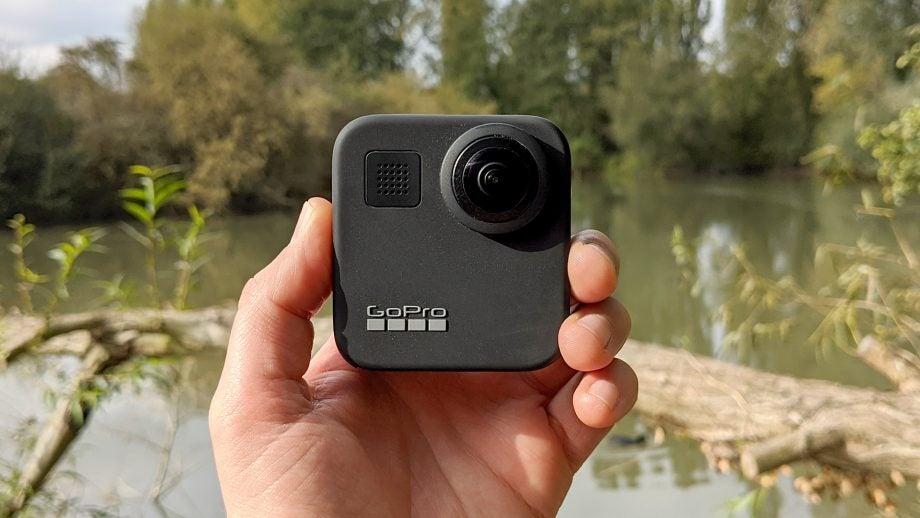
Verdict
GoPro has lowered the price, made the camera easier to shoot with and, frankly, far more useful. When you don’t need to shoot 360-degree footage, the Max works like a Hero 8 Black. Familiar action camera fields of view are at your fingertips.
The GoPro Max doesn’t display nearly the same image quality as the Hero 8 Black. However, stabilisation is superb and GoPro has managed to turn its 360-degree camera from a geeky curiosity into the most fun camera in its range.
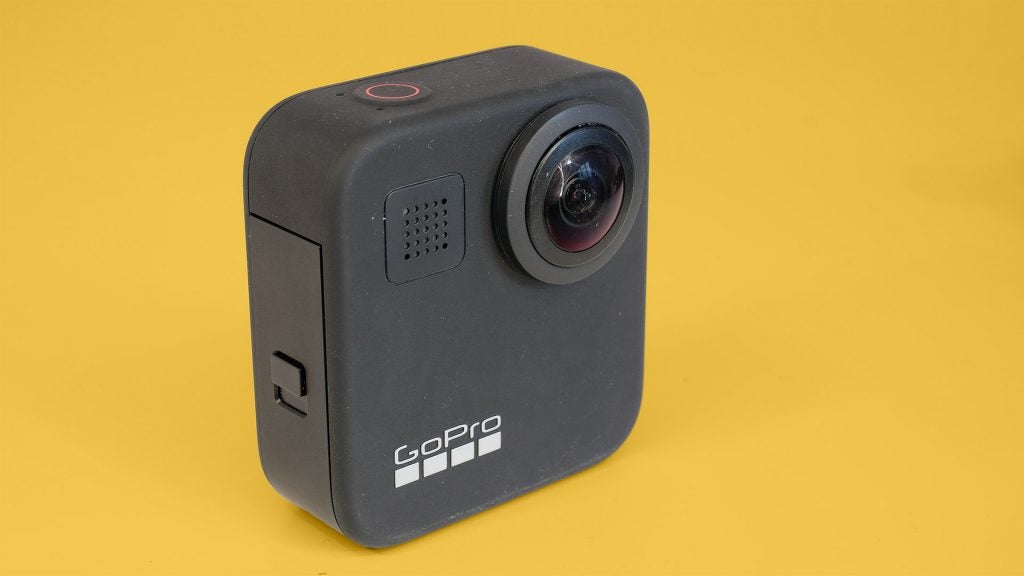
GoPro Max design – Non-replaceable lenses means using the lens caps is a must
The size of the unit is one of the most important changes between the Fusion and the Max. The latter camera is significantly smaller than the GoPro Fusion, which results in making the Max far more accessible.
At 10mm less wide, 6mm shorter and 15mm thinner than the Fusion, the Max is similar in size to the Hero 8 Black, but half a head taller. It remains palm-sized, and looks far less out of place than a Fusion when, for example, mounted to a bike helmet.
Handling the Max does feel different to a standard GoPro, though. The convex lenses on each side are vulnerable, and perhaps more likely to become damaged at home, or on the way to a shooting location, than they are during capture.
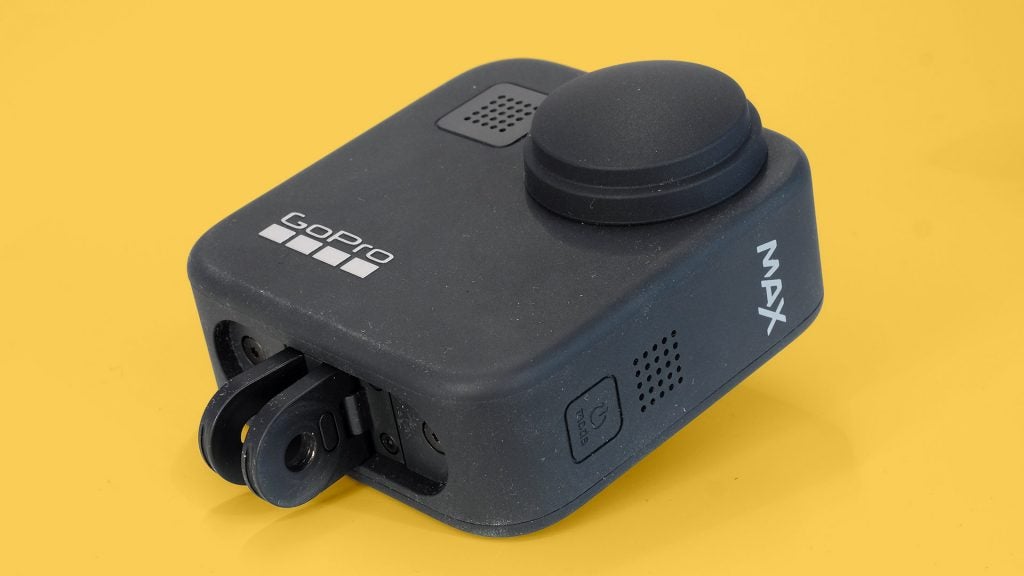
You can largely just throw a normal GoPro in a rucksack; I wouldn’t recommend doing so with a Max. GoPro does include a couple of lens caps in the box – but they’re easier to lose than a TV remote control. Nevertheless, they’re essential to keeping the optics scratch-free. These lenses are non-replaceable, so you’ll have to take care.
Actually using the Max is headache-free. It has built-in mounting fingers, so a separate mounting case isn’t required; just some form of mount or stick. It’s water-resistant, too, if not quite to the same level as the Hero 8 Black.
The GoPro Max is certified to a 5m depth; the Hero 8 Black to 10m. But it’s important to understand what this means in real terms. Water-resistance refers to the pressure of water a device can handle, so while the Max may be okay at a depth of 5m, it won’t (according to the stats) hold up at 5m depth with motion.
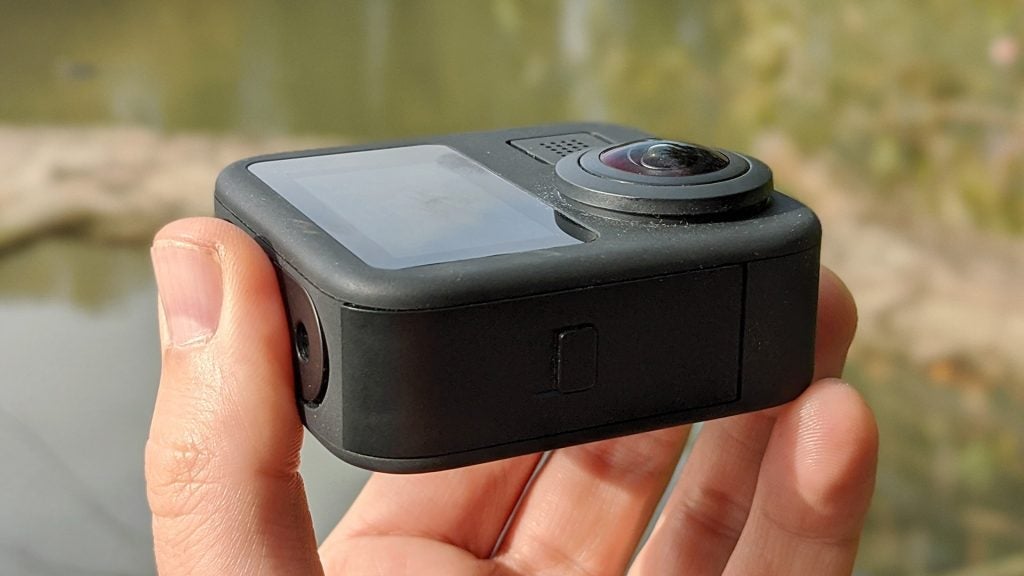
Judging by Garmin’s more in-depth recommendations at these same specifications, the Max can handle surface-level swimming and snorkelling, but shouldn’t be used for high-speed water sports. This model isn’t much use for underwater shooting anyway, thanks to visual aberrations resulting from the way the lens reacts to the refraction of light through water.
A 360Bubble is one solution. It’s an acrylic globe in which you mount your 360-degree camera. But it’s big and costs £200. Those wanting to take some video during a snorkelling holiday are better of with a GoPro Hero 8 Black; it shows how amazing underwater 360-footage can probably look with the right equipment.
All the other basics of the Max are on point. You can move and replace the battery without having to unmount the camera, thanks to a side-loaded battery compartment. Plus, it uses a USB-C cable to charge — most likely the same as your phone if you own a recent Android.
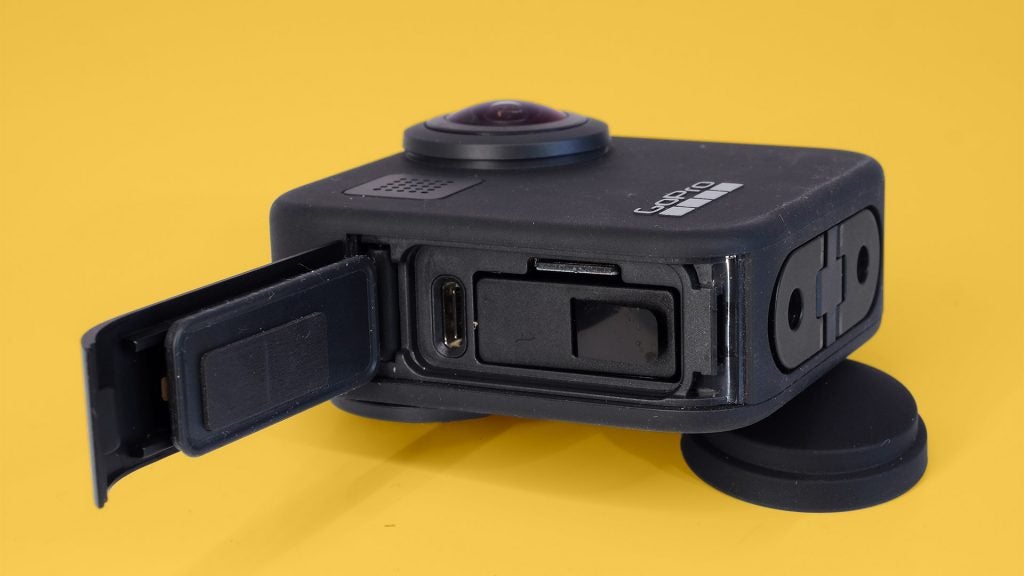
GoPro Max display – A decent LCD panel that provides a good view of your footage
The dual lens style may be a scratch hazard, but it also means you can use the Hero with the screen pointing either way. You get the vlog-friendly style of the DJI Osmo Action, without needing two screens.
This is a 2in touchscreen. Much like the GoPro Hero 8 Black, the chunky borders give you the sense it could be significantly larger in the same case. However, it’s easily big enough with which to confidently compose, and the LCD panel goes bright enough to stand out on brighter days.
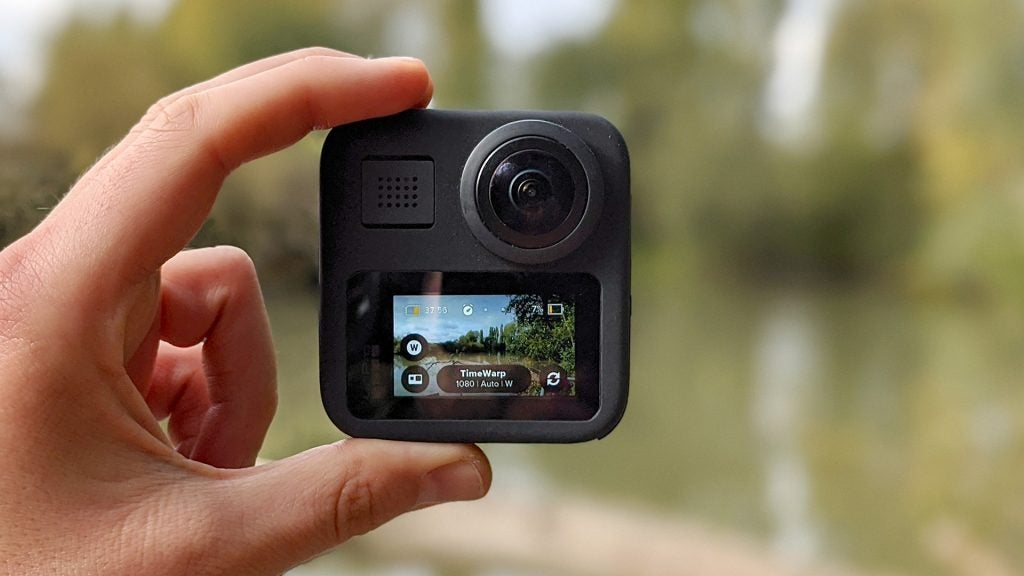
My particular Max displays some noticeable backlight bleeding towards the top, and the resolution isn’t super-high. But it does its job well, and the experience is much enhanced by the work GoPro has put into the software.
For example, you get to see the software stabilisation in action in the preview feed, providing a much greater sense of what you’ll see when it comes to the final result.
GoPro Max interface – Navigating the UI shouldn’t prove difficult
The GoPro Max’s interface is also fairly simple. Left and right swipes on the touchscreen, or presses of the side Mode button, switch between photo, video and time-lapse modes.
A little icon at the bottom-left cycles between the “360” and “Hero” modes, which determine whether the Max uses one lens or two.
Those who want to be more specific about frame rates and resolutions will need to get to grips with the big interface change for this generation: presets. These determine not just the field of view, the resolution and frame rate, but also “pro” specifics such as the min and max ISO, and what button shortcuts you see on-screen.
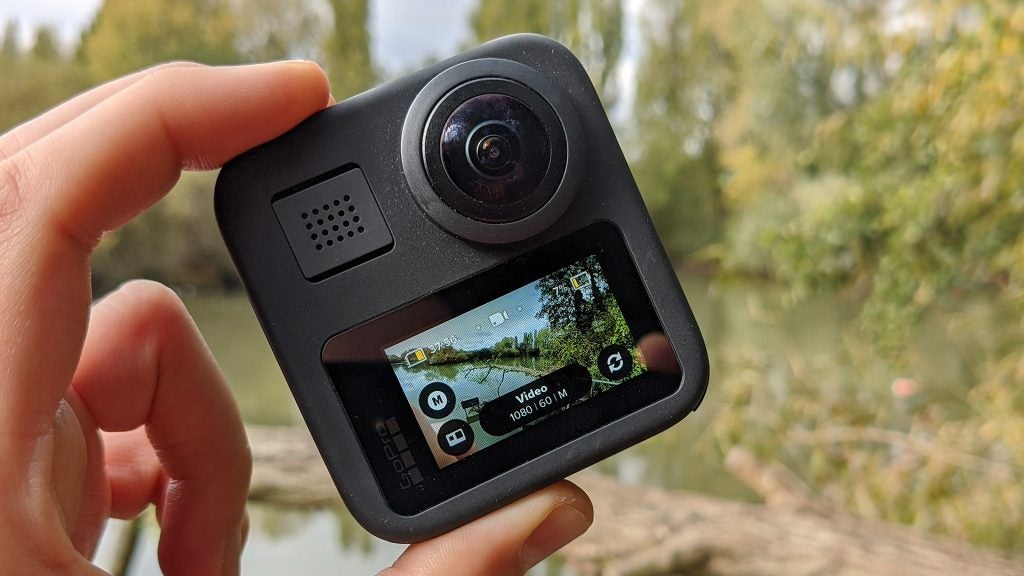
I imagine some buyers won’t actually make custom presets since GoPro programmes in the essentials. But it’s handy if you want to keep the white balance locked, or the ISO “high” to avoid blurred frames when shooting high-motion footage in less-than-perfect lighting.
The GoPro Max’s software speed is significantly better than that of the GoPro Hero White and Silver – but, unsurprisingly, it isn’t as fast as a top-end phone. Such phones have processors fast enough to power a laptop. The Max has the same GP1 as the Hero 7 Black and Hero 8 Black.
I’d appreciate a more responsive feel, but the GoPro Max doesn’t fall behind hugely here. While some find the DJI Osmo Action quicker, the difference isn’t world-changing.
GoPro Max shooting – Options are plentiful and easy to use
Versatility and simplicity are the GoPro Max’s strongest elements when you actually take it out shooting. There are five “views” to use before you even consider the two time-lapse modes.
You can shoot at 13mm, 16mm, 19mm and the “narrow” 27mm fields of view, and at 360 degrees – roughly mirroring those of the Hero 8 Black.
It’s like having two action cameras in one, and I often find myself using the non-360 “Hero” mode more than the 360 one. You clips are more immediately shareable, no major editing required.
GoPro has also improved the ease of 360-degree video editing. There are two main ways to get your videos into a form that people will actually want to watch, and Reframe is the most important for 360 videos.
You simply scroll through the video in the GoPro app post-shoot and specify “key frames”. At each of these you pinch and twist the view with touch gestures on your phone to tell the app what you want to see on-screen at each of these points. The app then creates smooth transitions between these frames.
I’ve been lucky enough to use the Max with relatively high-end Android phones, mostly the Samsung Galaxy A90 5G. Cheap phones may not run quite as well, but I find it’s a near-perfect solution for easy 360-degree image editing. It’s quick, intuitive and unfussy. And if you want more dynamic cuts and edits then you can make them with GoPro FX Reframe – a plugin for Adobe After Effects and Premiere Pro.
Timeline is the other important part of in-app video editing. You add your video clips, choose a theme, soundtrack and duration, and the app chooses the sections of each it thinks are the most interesting.
Just like Reframe, this is a very well designed way to quickly put together something you can share, with little effort. The results may not be dripping in imagination and inventiveness, but GoPro uses enough smarts to make them far more engaging than a very quick manual edit.
For example, transitions between clips are synced with the beat of the soundtrack, to give the result a sense of deliberate editing. This is something that’s far more time-consuming to achieve when doing the job manually.
Reframe and Timeline make the GoPro app much better than Insta360’s, the last 360-degree camera app I used. GoPro also avoids any over-reaching, potentially slightly embarrassing attempts to turn the GoPro app into a miniature social platform. It’s everything I need and want it to be, and little more.
You can also use the app to control your GoPro. It uses a direct Wi-Fi connection, which reduces the latency of the preview image to around a second. The preview image is commendably smooth, similar to the experience of using a smart home camera app. Use it in the 360 mode and you can also use your phone’s motion sensors to “look around”. Touchscreen gestures work, too.
Time Lapse and Time Warp offer some of the most dynamic-looking footage you can shoot with your GoPro. These are both “speeded up” capture styles, and Time Warp is generally the more useful of the two.
In Time Lapse you choose how often to capture a frame. In Time Warp you either leave it set to “auto” or choose a how fast you want action to seem, choosing a multiplier (in 360 mode). Time Warp videos are stabilised and you can press a button during capture to seamlessly revert to normal capture speed mid-clip. It works particularly well if you zoom up to a friend and get them to do something interesting at normal speed before zapping back to Time Warp tempo.

The GoPro Max isn’t quite as good at slowing down action. You’ll see “2x” slo-mo mentioned in GoPro’s documentation, but this only refers to 60fps shooting –which isn’t really considered a slo-mo frame rate at this point. The Hero 8 Black can shoot at up to 240fps.
GoPro Max image quality and stabilisation – Its images don’t compare to the Hero 8 Black, but stabilisation is unbeatable
There are significant compromises in shooting quality, although this isn’t down to a reduction in the quality of the hardware. The Max uses two good-quality 12-megapixel Sony IMX577 sensors and two 194-degree lenses, as identified in Hypoxic’s teardown of the camera.
The sensors are relatively small at 1/2.3 of an inch – the same as the average compact camera – and even when shooting 360-degree footage, not all of what they collect ends up in the final image. There needs to be a degree of overlap between the two cameras’ views, which is the reason they have 194-degree lenses, not 180-degree units.
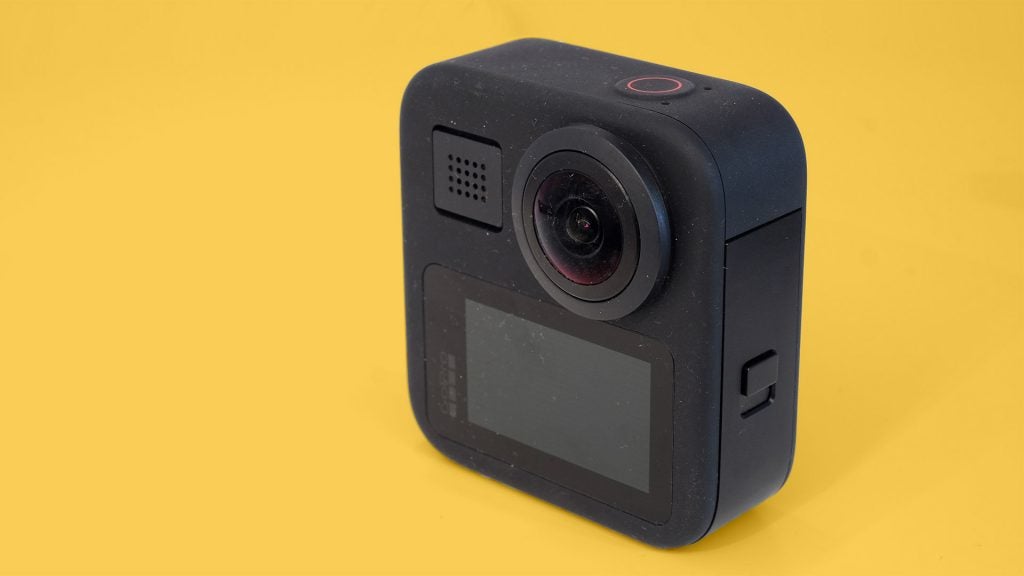
The further you crop into the view, with the various “virtual lenses” of Hero mode, the less sensor area is used. By the time you get down to the GoPro Max’s 27mm Narrow view, we’re talking about a relatively small effective sensor area.
The additional fields of view use digital zoom, and even when using the widest Max SuperView, your resolution options are limited to 1920 x 1080 and 1920 x 1440. There’s no standard 4K capture here, and while the 5.6k resolution of the 360-degree mode sounds impressive, it’s less so when spread across such a wide capture.
Resolution doesn’t reveal the whole story, either. Shoot at 1080p resolution, 27mm field of view with the GoPro Hero 8 Black and Max, and you’ll find the Black is significantly more detailed, sharper and more contrasty.
You see this in all fields of view. Switch to 4K capture on the Black (available in all views bar Narrow) and the quality gap widens. The Max can’t really touch a Hero 8 Black for linear video quality.
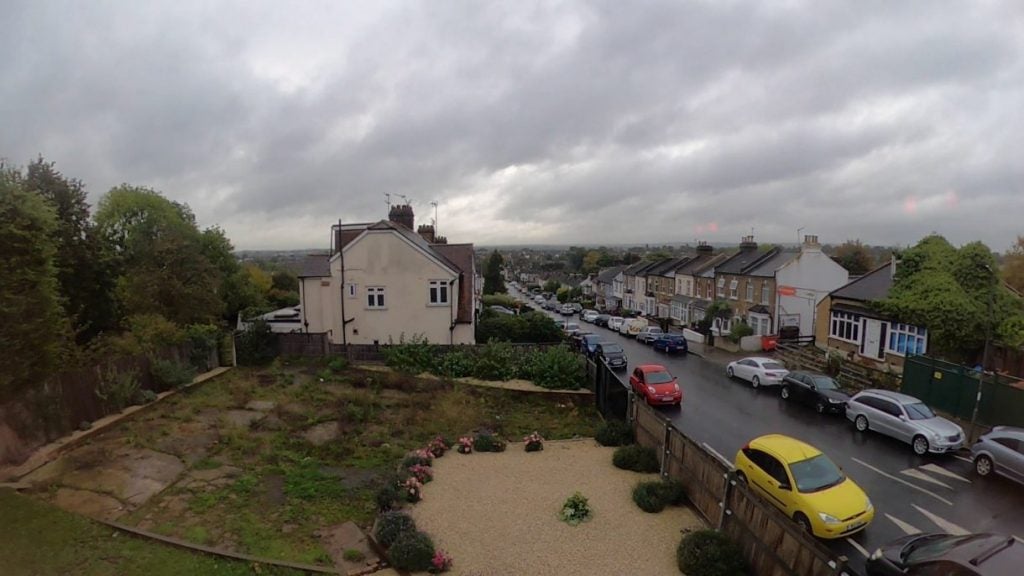
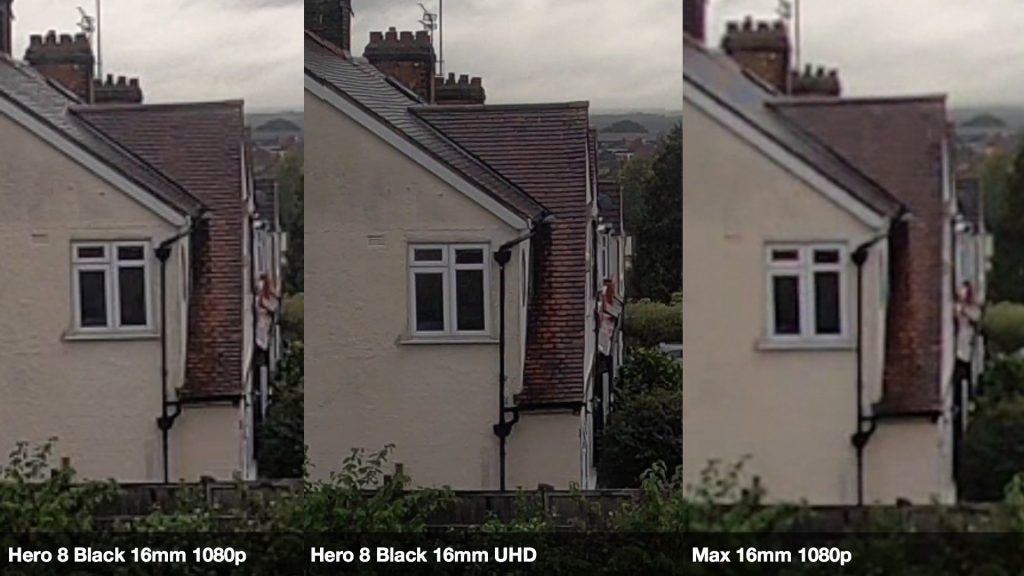
Its stabilisation is unbeatable, however. A hindrance for image quality becomes a benefit for stabilisation, because all that wasted image data seen by the sensor can be used to buffer movement. Stabilisation is so powerful that you may want to turn off its maximum setting – horizon levelling.
A 360-degree view of the world lets the Max remove all rotational movement, and its motion sensors also let it know which way the camera is facing at any moment. The result is that, with horizon levelling turned on, you can spin the camera around while shooting and the final video will appear level throughout. There may be a little image “fizz”, particularly in low light, but it initially seems a magic trick.
I probably wouldn’t want to use this mode all the time if, for example, I used the Max attached to my bike. Such a complete calming of movement can take away some of the energy from your videos, but it does mean you can shoot even more carelessly than with a Hero 8 Black.
I’d recommend using some care when taking 360-degree shots, though.
There is, like any consumer camera of this type, a slight visible border where the stitching happens. GoPro has actually improved this stitching via firmware updates since I first used the Max. When the stitch passes through the frame, it looks like a slight ripple across the image. It’s still most likely the best stitching you’ll find in a camera of this class, but for pro-looking results you’ll want to keep your subject towards the centre of one of the lenses.
A stick is a must too, if you don’t want part of your arm to be lopped off in the stitching process.
GoPro Max sound quality – It will do the job
GoPro says the Max has a microphone array comparable in quality with the Hero 8 Black when the shotgun mic attachment has been added. The number of mics is a clearer difference, though.
The Max has six, with clear mic grilles on the front, back and one side. GoPro’s Hero 8 Black are much closer together; one on the front and the others on the side and bottom of this same shell panel.
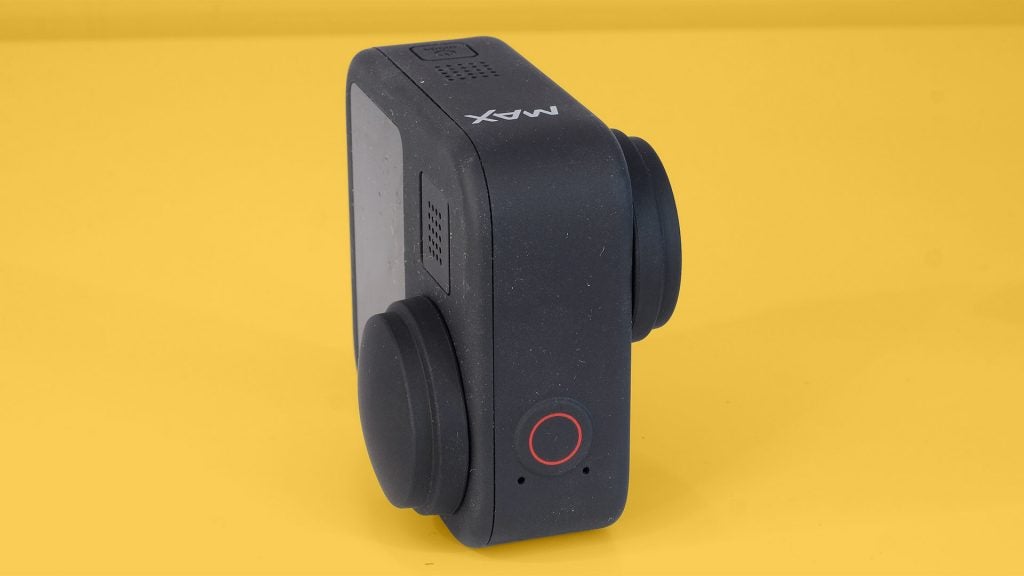
I used the Max and 8 Black to record sound from a tone generator and some music to see how they compare. The most obvious difference is volume; the Hero 8 Black records a significantly louder track. It’s also much more directional. Even when you set the Max to record from the front (there are multiple audio capture modes), minimising what the side and rear mics hear, you can hear much more of the shooting environment than through the Black.
There isn’t a huge leap in quality when switching to the Max, but it does seem to offer slightly clearer mids, perhaps due to a slightly tamer reaction to bass frequencies. And both cameras can pick up very low frequencies: in the 30Hz, sub-bass register perfectly well.
The GoPro Max can’t capture audio as well as a high-quality outboard mic, then, but it does record the ambient sound of the environment far better than the Black. This is particularly true if you use the “stereo” mode, which uses all six mics to pick up audio.
Should you buy the GoPro Max?
Don’t buy the GoPro Max if you want the very best 4K action camera footage around. Don’t buy one if you want to shoot underwater, either.
Do buy a GoPro Max if you want to have creative fun with an action camera. Its 360-degree editing is super-easy, it makes some wild-looking effects possible; and the “Warp” time-lapse video is great. This feels like a real 2-in-1 action camera.
We’ll be back soon to see if the modular Insta360 One R can beat it. But for now, this is the obvious 360-degree camera for normal folk to buy.


